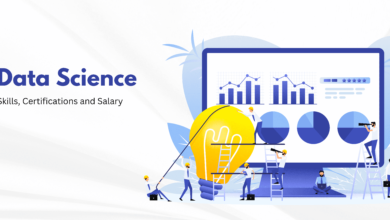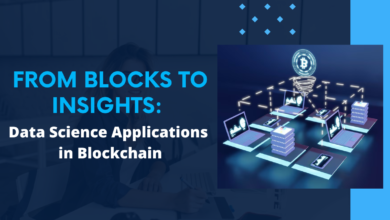Is your business ready for continuous intelligence?, CIO News, ET CIO

Today, we can get groceries delivered in under 9 minutes. But it takes a couple of hours to identify data anomalies that affect the business and the ability to react to them, in spite of having access to terabytes of data.
According to IDC, 69% of businesses in India now identify as digital, meaning they’re investing in solutions for real-time analytics, data fabrics, and data warehousing to dramatically improve decisions and outcomes.
In today’s rapidly accelerating real-time data world, only organizations that can act on their data immediately — ie, collect, analyze, and execute on data in milliseconds— can win. On the flipside, those that lack this ability simply won’t be able to keep pace with their peers that can pivot at a moment’s notice based on the latest data.
For this reason, more and more forward-thinking organizations are prioritizing investments in real-time data capabilities. Specifically, leading companies are moving beyond so-called “real-time analytics” — which isn’t exactly real-time to begin with — and investing in the next generation of data analysis: continuous intelligence.
What is continuous intelligence?
Gartner defines continuous intelligence as a design pattern in which real-time analytics are integrated into business operations, processing current and historical data to prescribe actions in response to business moments and other events. It combines historical and real-time data with high speed processing to power modern AI applications, ML ops, and real-time data analytics for organizations to grow in the modern digital era.
At a high level, continuous intelligence enables organizations to make informed decisions, automate processes, and respond promptly to changing conditions or events. For this reason, it comes as no surprise that the market for continuous intelligence — which generated $20.5 billion in 2023 — is expected to increase to $52.91 billion by 2030, growing 14.5% each year until this time.
The move toward continuous intelligence marks the next step in data analytics. Before continuous intelligence, organizations relied on traditional business intelligence systems for data analysis. Such systems typically involved batch processing of historical data to generate reports, dashboards, and insights for decision-making. But for the most part, the insights surfaced were retrospective and not well-suited for real-time decision-making.
The growing demand for real-time insights and decision-making capabilities led to the emergence of real-time analytics solutions. Such technologies leverage stream processing engines, complex event processing systems, and in-memory databases, enabling organizations to analyze data as it was generated so they could detect patterns, trends, and anomalies faster. However, many of these systems weren’t actually capable of lightning-fast responsiveness, preventing organizations from truly moving at the speed of real time — which paved the way for the rise of continuous intelligence.
Businesses that can successfully integrate continuous intelligence into business operations can react swiftly to changing conditions, deliver more value to customers continuously, and make money, save money, and mitigate risk.
Challenges in delivering continuous intelligence
Like any other business practice, continuous intelligence is not without its challenges. Before embarking on your journey to continuous intelligence, it’s important to consider these key challenges and solve them ahead of time.
Accurate and consistent complex analysis
Implementing continuous intelligence starts with maintaining high-quality data streams, since inaccurate and inconsistent data can lead to flawed insights. To process data in real time, organizations need to ensure consistent data quality and leverage real-time decisioning engines that enable them to act on disparate data and event streams within tight latency constraints.
Without the right tools in place, this is essentially an impossible task. To accelerate ROI on your investments in continuous intelligence, it’s smart to look for a deployment partner who can set you up for success out of the gate while helping you optimize total cost of ownership (TCO).
Latency
Latency is a major challenge in continuous intelligence because it directly impacts the speed and responsiveness of real-time data processing. In scenarios where immediate action is required, even minor delays can lead to missed opportunities or ineffective responses. Latency becomes particularly critical in applications like financial trading, cybersecurity, telco, and IoT where timely insights are crucial for things like fraud prevention, protecting against security breaches, upselling customers in the moment, and keeping machines operational.
To ensure you can conduct decisioning within tight latency windows, a real-time data platform is essential. Such platforms are designed to handle data streams nearly instantaneously, allowing organizations to derive insights and trigger actions in near-real time.
Availability
To achieve continuous intelligence, organizations need always-on technologies due to the need for uninterrupted access to data and insights in real time. Any downtime or disruptions to data processing can lead to missed opportunities, delayed decision-making, and potential financial losses.
To ensure high availability, organizations need to deploy robust infrastructure, fault-tolerant systems, and scale-out data platforms that stay online even when a node in a cluster fails.
Scalability
continuous intelligence systems must be capable of handling growing data volumes and processing requirements while maintaining performance and responsiveness. As organizations continue to generate more and more data every day, they need to ensure their data platform and infrastructure is capable of scaling efficiently to accommodate the increasing demands of continuous intelligence.
Scaling out horizontally by adding more resources or nodes can be complex and costly, especially when dealing with complex analytics tasks and high-speed, high-volume data streams. Additionally, achieving seamless scalability while maintaining data consistency, reliability, and low latency presents additional hurdles. This is why it’s so important to adopt truly scalable architectures that are built for modern workloads.
Technologies that help deliver continuous intelligence
At its core, continuous intelligence requires a slew of technologies that work together to keep the decisioning engine humming along. But when it boils down to it, there are three key technologies organizations must have in place to truly achieve continuous intelligence.
A real-time data platform
continuous intelligence is only possible with a real-time data platform capable of processing streaming data quickly, accurately, and consistently, thereby enabling timely insights and actions. Such platforms offer the speed, scalability, and low-latency processing needed to handle the high volume and velocity of data generated in the moment. With integrated complex event processing capabilities, real-time data platforms can detect patterns, anomalies, and correlations as data streams in, enabling organizations to make rapid data-driven decisions.
Real-time data platforms seamlessly integrate with streaming technologies, supporting advanced analytics use cases, like machine learning algorithms and predictive and preventative analytics. As a result, organizations are able to respond to dynamic business conditions with confidence.
Ultimately, a real-time data platform serves as the backbone of continuous intelligence. Without one, continuous intelligence can’t be achieved.
Edge computing
For many organizations — including telcos, industrial operators, and manufacturers — continuous intelligence also requires edge computing. This enables them to process data closer to the source, reducing latency and enabling real-time decision-making where the data originates. Since edge computing brings computational power and analytics capabilities closer to IoT devices, sensors, and other endpoints, organizations can analyze data streams locally without having to send them back to a central data center.
By processing data at the edge, continuous intelligence systems can respond rapidly to events and extract insights in real time, even in environments with limited network connectivity. This is crucial for use cases like industrial automation, autonomous vehicles, and smart cities.
IoT
Continuous intelligence also relies on IoT devices to collect real-time data from the physical world. Such devices — including sensors, smart meters, and air quality monitors — enable the continuous monitoring of environmental, operational, and behavioral metrics. This constant stream of data provides valuable insights into processes, systems, and interactions that can drive informed decision-making in real time.
IoT devices play a central role in continuous intelligence by expanding the scope of data collection beyond traditional sources (e.g., databases and logs). They enable organizations to gather data from diverse environments — like manufacturing facilities, supply chains, and smart buildings — which broadens the range of insights that can be surfaced.
By integrating physical and digital systems, organizations can optimize operations, enhance customer experiences, and unlock new revenue streams — all while making data-driven decisions and eliminating guesswork from the equation.
Continuous intelligence in action: real-world use cases
By now, you’re probably thinking that continuous intelligence sounds good enough. But you might be wondering what this looks like in the real world. Let’s close out with three real-world use cases for continuous intelligence.
Telco: Optimizing profitability
By analyzing streaming data from customer interactions, usage patterns, and market trends, telcos can personalize offers, predict customers needs, and optimize pricing dynamically. continuous intelligence enables telcos to identify high-value customers, tailor promotions, and bundle services based on individual preferences and behaviors — driving more revenue. At the same time, telcos can use continuous intelligence to optimize business support system (BSS) processes — like billing, CRM, and revenue assurance — reducing costs and minimizing data leakage. Taken together, continuous intelligence enables telcos to optimize profitability.
Manufacturing: Maximizing production
In manufacturing, continuous intelligence enables predictive maintenance, quality control, and process optimization — which, in turn, helps manufacturers maximize production yields. For example, they can use sensors and IoT devices to collect real-time data on equipment performance, energy consumption, and production metrics. By analyzing streaming data instantly, manufacturers can detect anomalies, predict equipment failures, and schedule maintenance proactively. This allows them to minimize downtime, increasing operational efficiency while improving product quality.
Fantasy sports: Improving the customer experience
Dream11, the world’s largest fantasy sports platform, has more than 300 million users and is delivering continuous intelligence on a real-time data platform. This platform can accommodate 15 million concurrent users at peak times — a critically important capability because players are more likely to churn if a platform is glitching, has inaccurate data, or lags. By using continuous intelligence to optimize performance and provide up-to-date data and personalized recommendations, Dream11 can deliver a superior customer experience — and that’s why it’s the number-one fantasy platform in the world.
Embrace continuous intelligence or get left behind
In a world that moves faster every day, organizations simply can’t afford to make decisions based on gut instinct. By embracing continuous intelligence and investing in the requisite technologies, companies can make data-driven decisions in real time — every time. That’s the ticket to happier customers, healthier margins, and a bigger bottom line.
Take Volt Active Data for a trial today.
The author is Fahad Khan, Country Manager, India, Volt Active Data.
Disclaimer: The views expressed are solely of the author and ETCIO does not necessarily subscribe to it. ETCIO shall not be responsible for any damage caused to any person/organization directly or indirectly.
NOTE: This article is a part of ETCIO Brand Connect Initiative.




